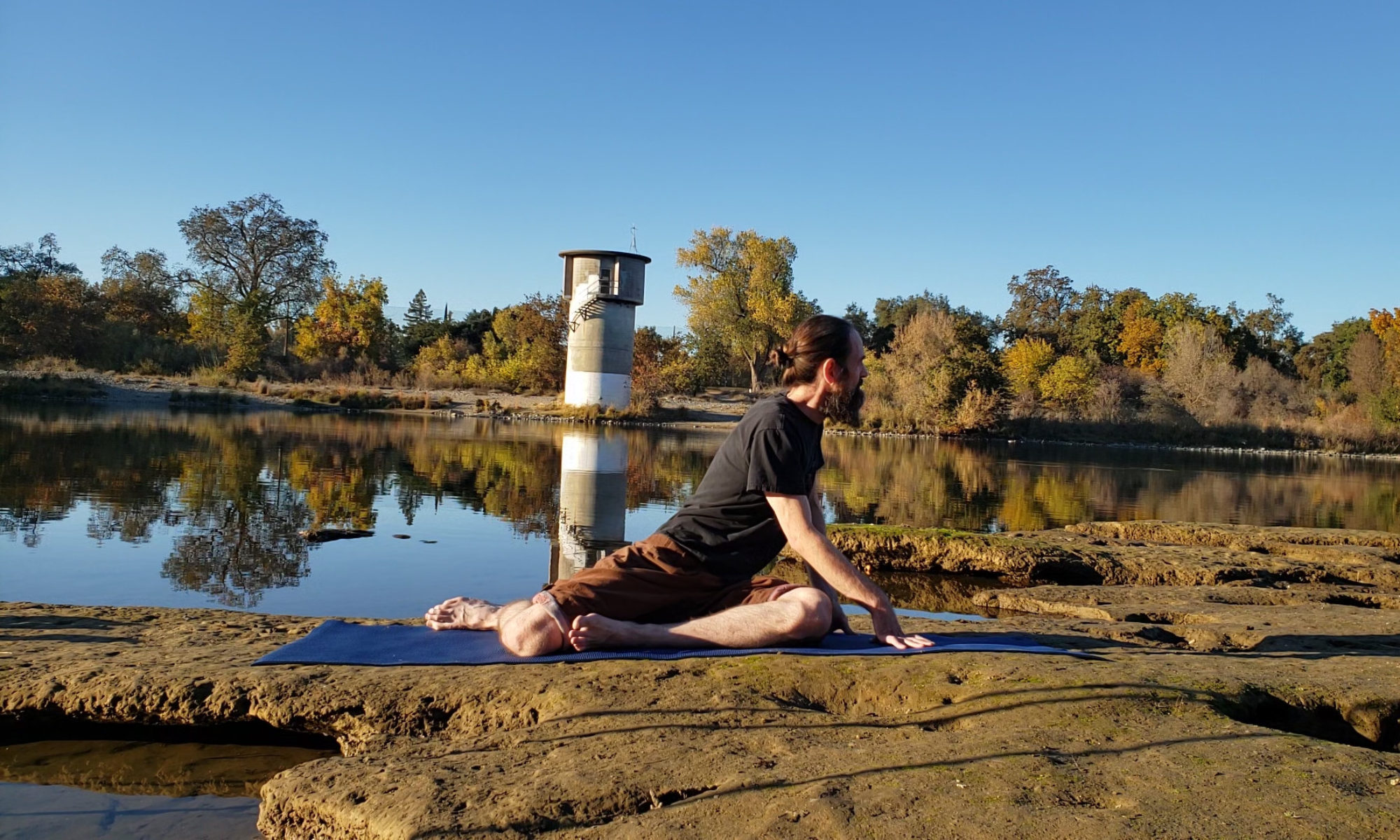This is a stretch sequence that helps to relieve tension in the hips, legs, and spine. The motion is similar to the arm motion in the breaststroke swimming stroke.
Sequence Steps
- Begin by standing upright with your feet apart at hip width.
- Place your hands together with the tips of your fingers touching and pointing horizontally away from you just in front of the middle of your chest.
- Find a comfortable balance point on your feet with your weight mainly on the fronts of your heels and a small amount of weight on the fronts of your feet. Very slightly shift your weight forward and back, then side to side to find the optimal balance point where you feel the least amount of effort to remain standing in this position.
- Move your wrists gently together and apart to find the position with the least tension in your wrists and fingers. Shift your shoulders slightly to make sure you are not holding onto any unnecessary tension in them.
- Picture yourself very slowly reaching your hands as far in front of you as possible. Assure yourself that a body free of tension can reach far in front of you without sensing any muscle tightness. Use this assurance to quickly recognize when your body is tightening up so that you can relax those muscles before they cause a higher level of tension.
- Take a deep breath in. On the exhale, send a deep wave of relaxation throughout your body, while keeping your hands at the same position.
- Begin very slowly moving your hands directly ahead, allowing your body the freedom to re-arrange itself to keep your balance point on the fronts of your heels.
- When you are as relaxed and balanced as you can be with this position of your hands, allow your hands to move a few more millimeters forward.
- When your hands get as far away from your chest as they can be without getting too tight, pause for a few breaths here to see if you can make this position of your hands in space any more relaxed.
- Next, slowly rotate your elbow outward so that your palms are facing down.
- Begin slowly moving your hands apart so that your arms and torso will eventually form a T with your shoulders remaining at their current position.
- When your arms form a straight line, allow your hands to slowly drop to your sides, keeping all of your muscles as relaxed as you can.
- Then, slowly roll up your upper back and shoulders, leaving the head to come up last.
Tips:
- If any sustained or sharp pain or muscle spasm is felt during the sequence, immediately move to a comfortable position. Remember where the pain was felt so that you can steer around the pain and move more slowly and gently near that position.
- Keep checking that your balance is still on the fronts of your heels and adjust if you are too far forward or back.
- The more quickly your body starts to tense up as you move, the slower you should move. This sequence starts out pretty relaxed, but as you reach forward further, your body may tense up quicker, so you might start out by moving fairly quickly, but slow down as your hands get farther from your chest.
- Think of each tiny movement forward as being a pose that you want to make as relaxed as possible. The combination of all these poses in order constitutes what I call a stretch sequence. The more relaxed you make each of these poses, the better the stretch you will get.
- Closely monitor the muscles throughout your body to listen for any tension that starts to creep in, especially your shoulders, arms, legs, and spine. If any muscles start to grab, pause and use a few deep breaths to release those muscles while keeping your hands at the same position.
- At each of these positions, imagine your hands have to remain here for several minutes, finding a body positioning that will allow you to do so comfortably.
- Allow your body to reorganize itself with each exhale, with the only requirement being that you keep your hands at the current position. Your shoulders are free to round and your hips are free to bend, but keep your knees straight.
- Keep the motion as slow as possible so that any tension that creeps in can be quickly relieved.

